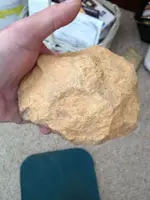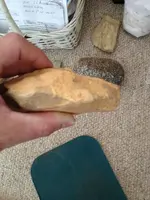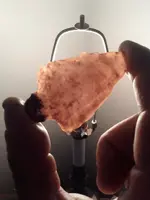blanks are not made naturally to be blanks, most are are produced from spall reduction, you are working a bigger piece of rock down to a more managable piece. Each one of those "ridges" or "waves" on the edge of his piece he is showing is made from reduction, it ia also setting up a platform for the next spall to some off. If this was a paleo spall, then it would be worked down raw, if not then it needs more reduction to be cooked through. That piece can be reduced down to a cracker thin preform that will be ready for secondary flaking. I am not a knapper but have been selling my coral for over 10 years to knappers and I do spall and cook and I can drive uniform plates off of a good head just by setting up my platforms on the host rock....
This may sound silly to some out there but if you can find a knap-in in your area I would go, not to watch the FOG knappers and slabknappers but one who knows his business. You watch the guy for awhile and if he is true to his point types, not all are super thin, then you start to see a pattern in the flakes that come off of that particular point type and when you find them inthe field , right away you will know what stage flake it is etc.



























